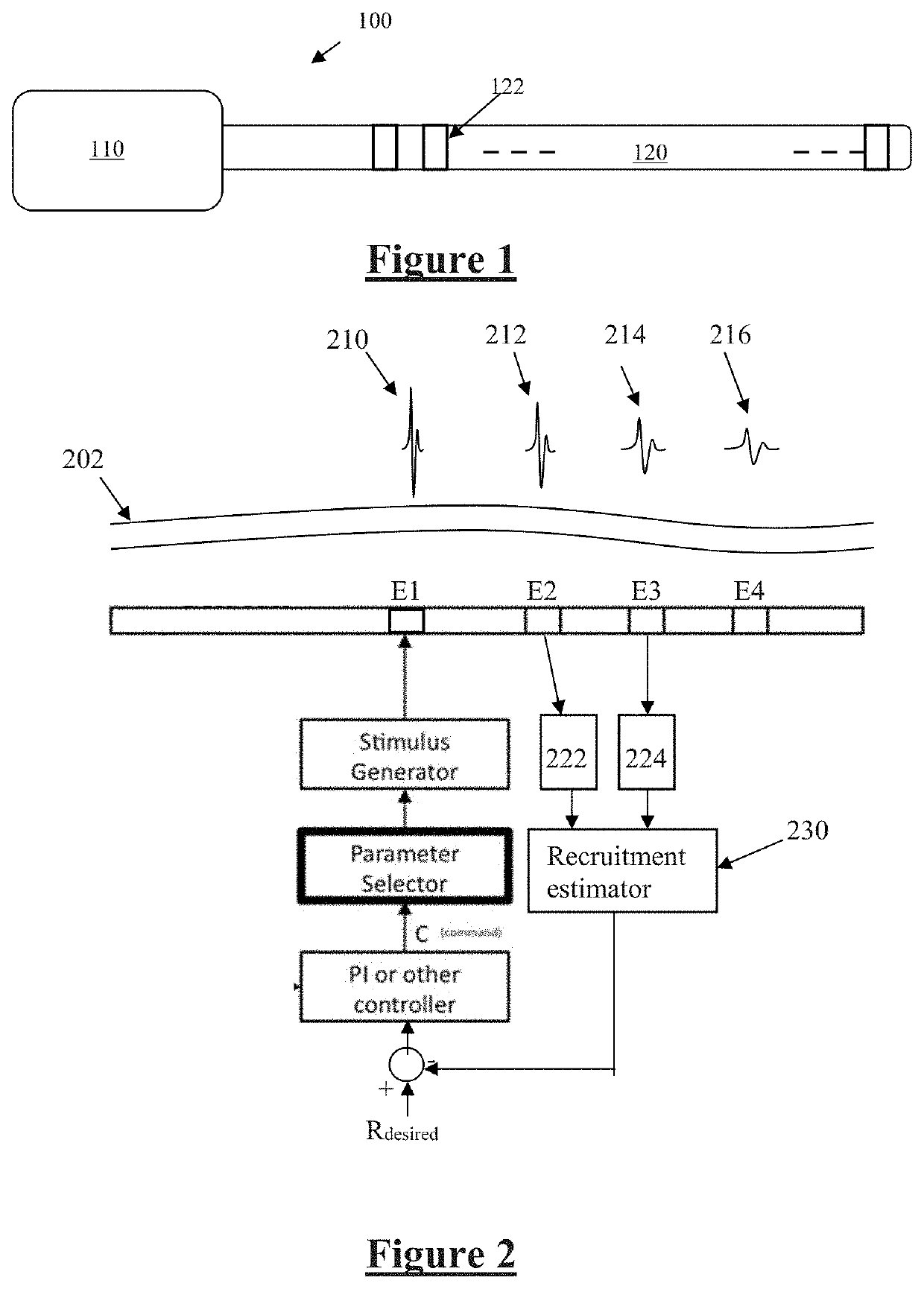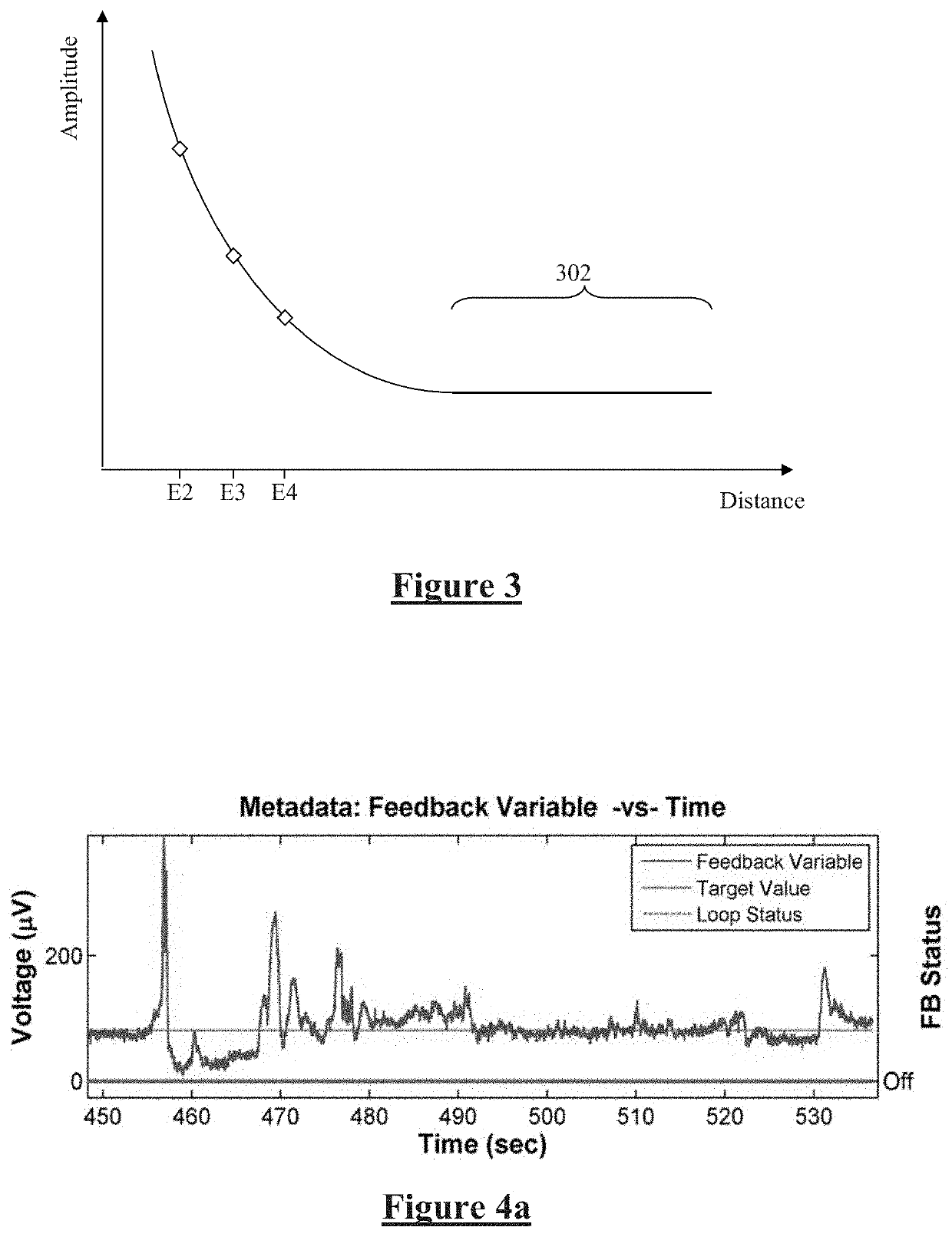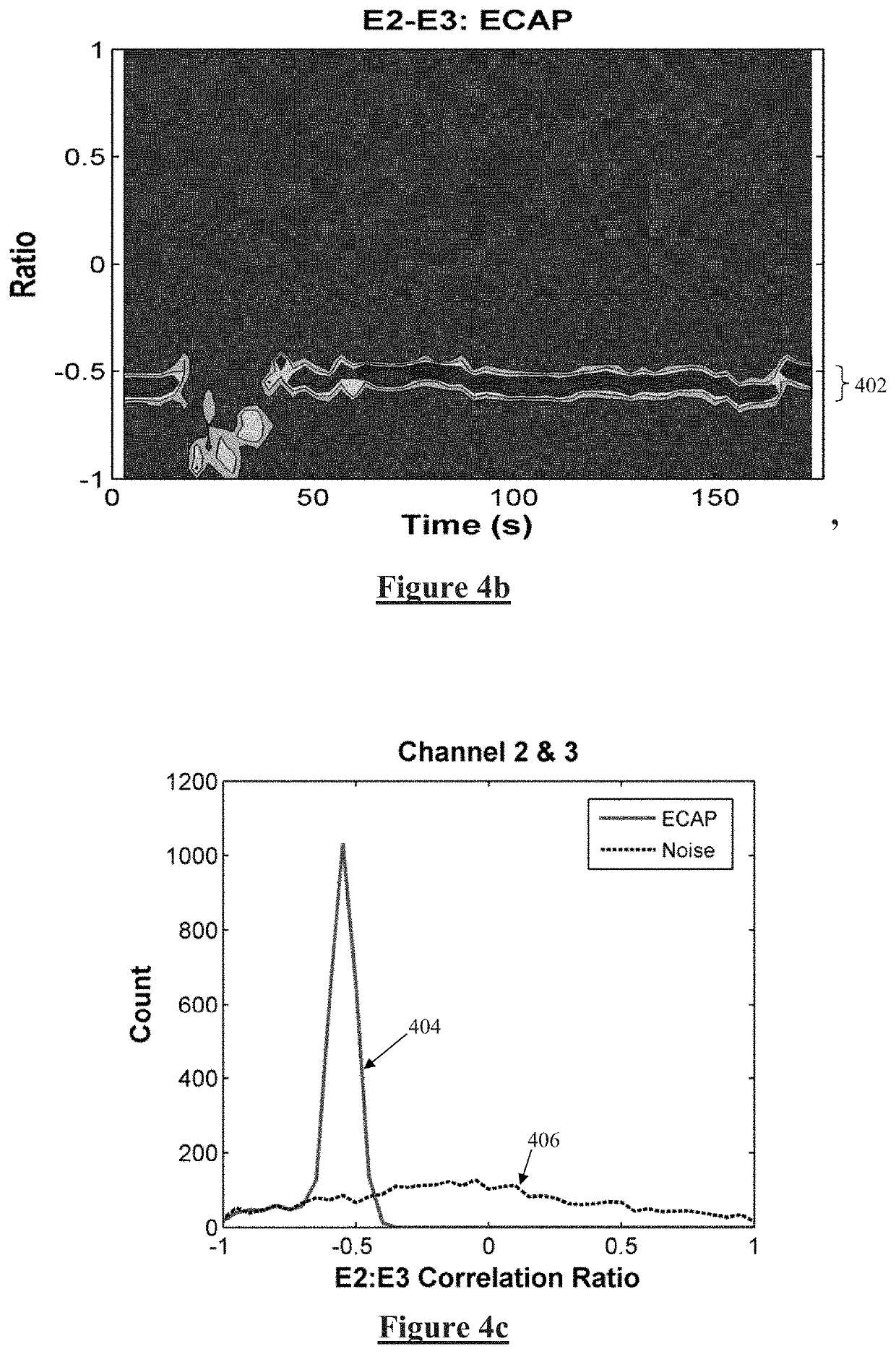Method and device for detecting a neural response in neural measurements
a neural response and neural measurement technology, applied in the field of neural response detection, can solve the problems of difficult task, presenting a significant obstacle to isolating or even detecting the much smaller cap signal of interest, and the impracticality of implant system, so as to improve the resistance to corruption and improve the determination
- Summary
- Abstract
- Description
- Claims
- Application Information
AI Technical Summary
Benefits of technology
Problems solved by technology
Method used
Image
Examples
Embodiment Construction
[0050]FIG. 1 illustrates an implantable device 100 suitable for implementing the present invention. Device 100 comprises an implanted control unit 110, which controls application of neural stimuli, and controls a measurement process for obtaining a measurement of a neural response evoked by the stimuli from each of a plurality of electrodes. The control unit 110 includes a processor and a storage memory (or other storage device(s), not shown) for carrying out the method of the present embodiment of the invention. Device 100 further comprises an electrode array 120 consisting of a linear array of electrodes 122, each of which may be selectively used as either the stimulus electrode or sense electrode, or both.
[0051]FIG. 2 is a schematic of a feedback controller implemented by the control unit 110, based on recruitment. An important component of such feedback control is a recruitment estimator 230, which performs the difficult task of detecting whether an evoked neural response is pre...
PUM
 Login to View More
Login to View More Abstract
Description
Claims
Application Information
 Login to View More
Login to View More - R&D
- Intellectual Property
- Life Sciences
- Materials
- Tech Scout
- Unparalleled Data Quality
- Higher Quality Content
- 60% Fewer Hallucinations
Browse by: Latest US Patents, China's latest patents, Technical Efficacy Thesaurus, Application Domain, Technology Topic, Popular Technical Reports.
© 2025 PatSnap. All rights reserved.Legal|Privacy policy|Modern Slavery Act Transparency Statement|Sitemap|About US| Contact US: help@patsnap.com



